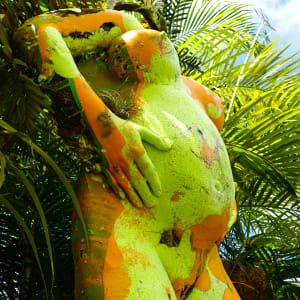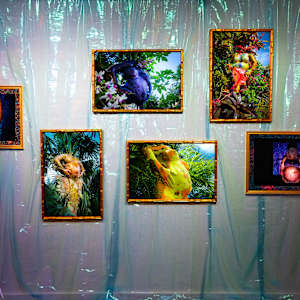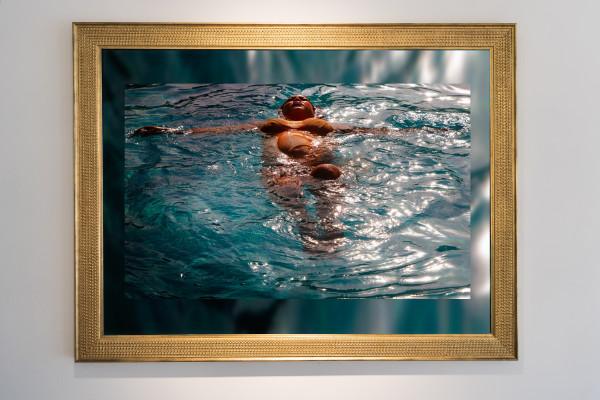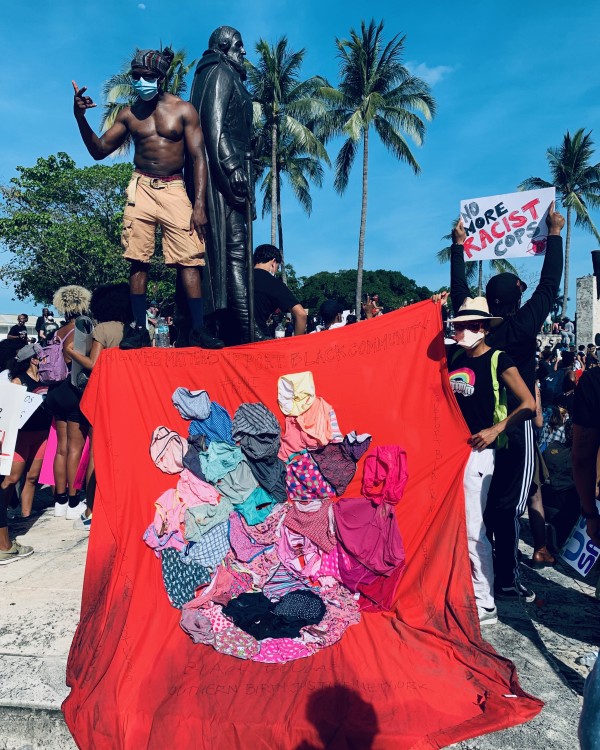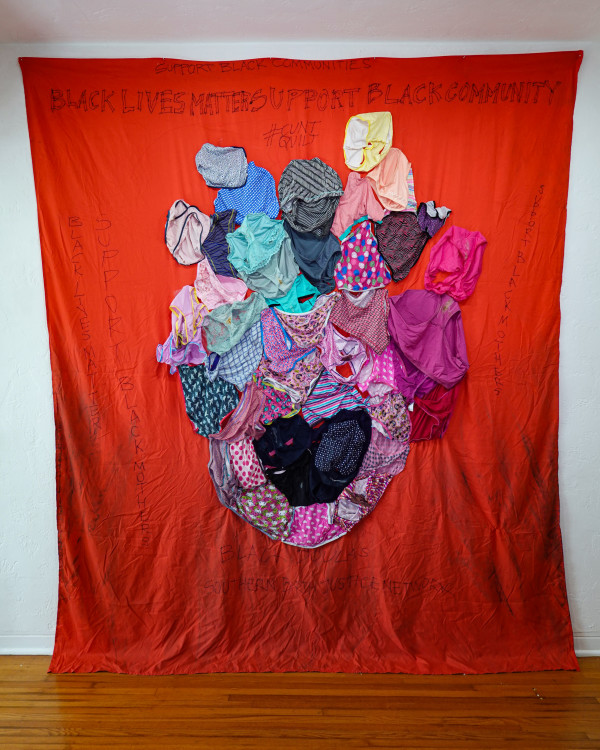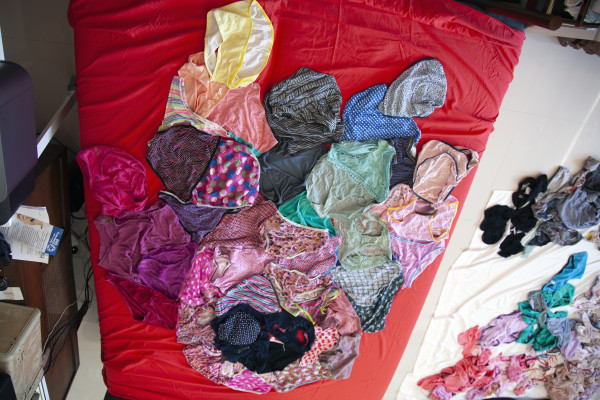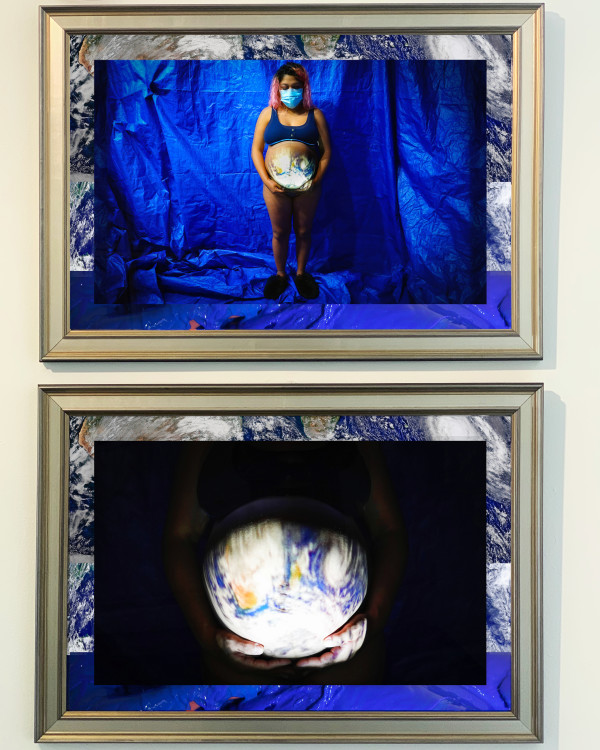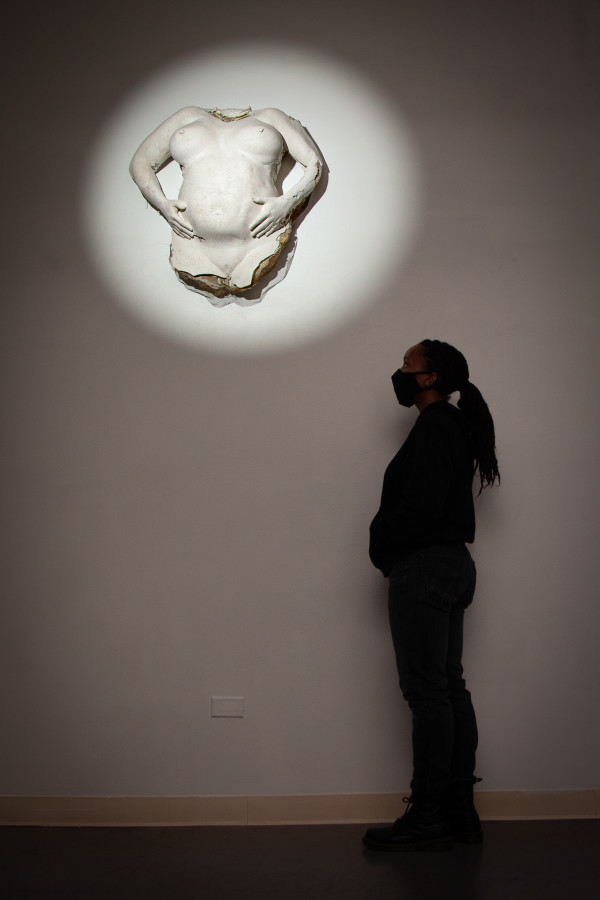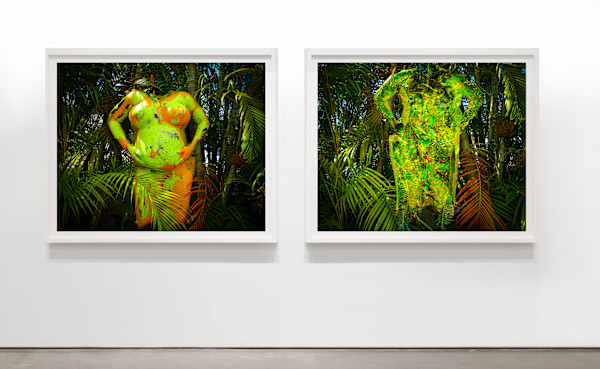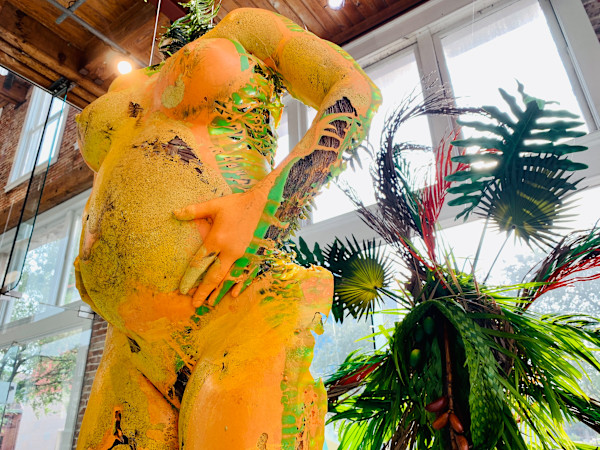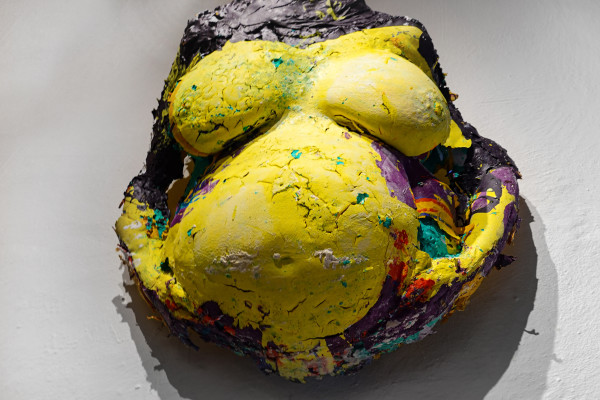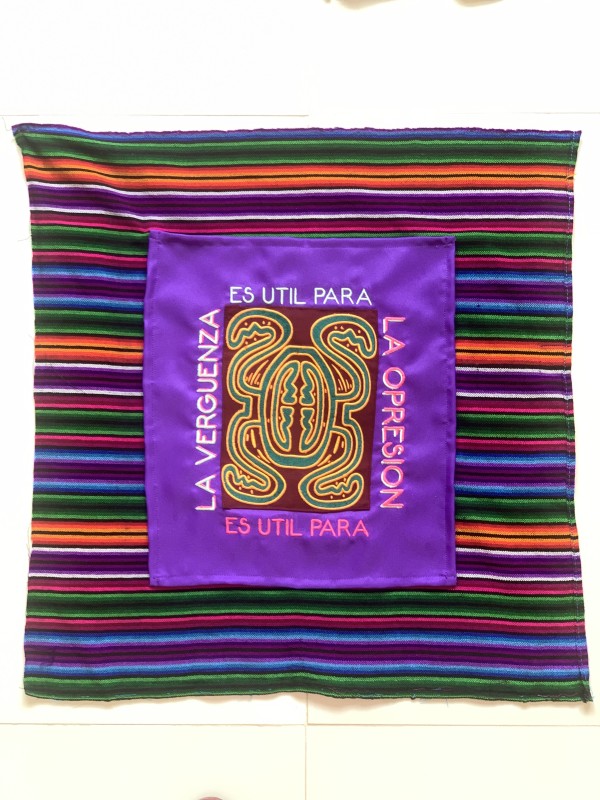A gestating figure with porous, citrus skin nests among Areca palm fronds as a pieta between an exotic mother and her endemic habitat. Inspired by Caribbean tales about pregnancy, which claim that citrus cravings and nausea indicate the gender of a fetus, the title recalls Edward Kamau Brathwaite's "Mother Poem".
The work considers the culture of procreation in the Americas- a complicated historical, political, and geographic context wherein conquering the wild landscape, reproductive bodies, and indigenous societies stem from a colonial Eurocentric legacy. Inhabiting its endemic environment, the fertility votive is made by combining intimate ephemera and environmental waste cast into a slurry of domestic construction materials. Monuments to the fertile survivors of man-made and natural disasters, the Mother Mold effigy figures bear the burdens of internalized structural violence made in and of our bodies, our landscape and our movement. Cast palm trunk husks, braided palm fronds, air plants, floor resin, wall insulation foam, interior latex house paint, plastic funerary plants, dessicated tropical plants are emboldened by a tropical, pregnant figure to embody our collective refuse as a site for procreative refuge.
The work's title draws from "Mother Poem" a book and poem written by Caribbean poet Edward Kamau Brathwaite.
"Flowered / dead river courses: dry causes / the leaves of the land eaten by tourists / my mother's vision blocked by bricks and cement blacks / leak of cool from the grass / from the glass of thirst / in her throat / and her children."
Apariciones: Virgen Gruta (2020-present) photographs render fertility effigy altars of Mother Mold monuments in their fecund habitat to reclaim American material refuse as a vernacular, maternal refuge. Venerating entropic life and death cycle rituals across indigenous equatorial cultivars, the vibrant retablos are apparitions of vulnerable, yet unvanquished interior psychic landscapes overcoming assimilation and species collapse. Welcoming and warning viewers to the fabled biography of plantation labor farms and botanica pharmacies, the works excavate biological impacts on melanated, chosen families whose endangered plantology wisdom transgresses health and habitat disparities. Digging in personal and global South and equatorial archives over 2 decades, the artist renders the geopolitics of gender, displacement and land sovereignty emerging within the syncretic sites in their familiar, queer and quaint, endemic or exotic landscape.
- Subject Matter: Landscape, Pregnant Figure, Fertility Effigy, Mother Mold Monument
- Collections: Apariciones Virgen Gruta series


